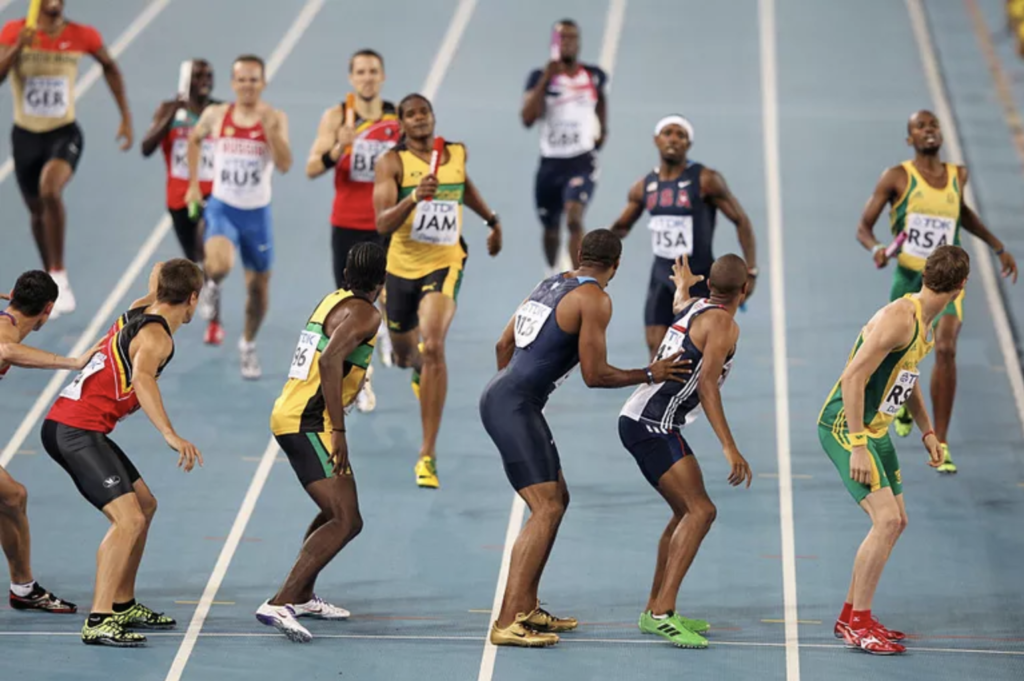
A significant portion of life humans spent at work. The numbers are ruthless: we spend more than 80,000 hours at work over a lifetime. That comes to almost ten years of constant, non-interrupted work. No doubt, job and working environment are one of the decisive elements of our living. It is right to say that the ways we are interacting at work will impact our lives and those we are working with.
At work we associate with others by forming social units called groups or teams. In day-to-day context words “group” and “team” are interchangeable. Organisational studies showed that those two words are used as synonyms, although they are not (Kozlowski & Bell, 2001). It happens that we are thinking about the team, but we are working as a group. Or vice-versa. Sometimes, even being aware of differences, people prefer operating within the group norms, deliberately avoiding being part of the team. Hypothetically, even if we do not care about the distinctions between group and team, we should know the differences and effects. Differences between groups and teams substantially impact how our work is delivered.
Group
Every organisation is, in some way, moulded into the groups. A graphic example of a group easily transmitted in a working environment is relay runners. The runners are taking turns, each racing their predefined individual run—share. Although relay runners are running and partaking the same goal with others, they cannot tangibly impact or support each other in a way other than running when their running times come. Not before, not later. And if something goes wrong with one of the runners, it will take time until others could act and support. The obvious downside of a group is the individual’s possible failure, which affects all others in a group. Groups utilise individual strengths (running) to get the job (race) done. A group has a default “communication disconnection” since, in a group, one is not directly “responsible” for others’ work. Since individuals focus on their own goals, it is harder to see the broader picture of how others are doing.

Team
A team emerges out of a group as a natural tendency for better performance. Informally speaking a team is a polished group; it is a group but with specific characteristics which makes them a team. A team exists to assist individuals in their challenges not addressed in a group. It does so by helping in shortcomings and accenting each other’s strengths. Compared to a group, a team can access resources from a broader scope of acquaintances. Not depending on individuals only, teams draw from diverse expertise and skills when facing an obstacle. Team members are more intimately committed to each other, the organisational mission and purpose. Through supporting, team members are carrying more responsibility in the areas they are more capable of. This reciprocal commitment creates a strong bond and a substantial long term motivation to perform and become better at a job, whatever that might be.
From group to team
As hinted before, it is natural that we are naturally looking towards the better and uplifting organisational environment. That is an evolution from a group to a team which exhibits six characteristics. To extend those features are manifested; to that extent, we can measure a team’s functionality:
- Purpose. The purpose is the foundational and concluding factor of the strong teams. The purpose must be meaningful, for sure more than money, to create a sense of mission of doing something essential, worth working together. Without it, all other features of the team are going to fail in the longer term. All members are conscious of that purpose. Coming back to relay runners example; groups’ purpose can not be running and getting the monthly salary.
- Open communication. The team members should feel free and inspired to express their insights on how the organisation could function better. Open communication has a beneficial impact on every aspect of the organisation. It uplifts working culture and productivity and supports healthier company growth.
- Joint decision. The decision made should be a result of the organic, collective contribution of all the team members. A joint decision is a process of arriving at a conclusion based on the remarks of multiple individuals. Consequently, all members will be ready to put in more enthusiasm in whatever their contribution is.
- Shared responsibility. This quality is visible from a team’s capacity to make decisions together (previous point) and acknowledge that it is their decision. Team members are comfortable carrying the consequences of decisions made. All team members are on the board with the direction organisation is going to.
- View on conflicts. In a team, a difference of opinions is regarded as a source of new information and ideas. The attitude one should have in case of dispute is assertiveness. That would mean making yourself and your points clear to others working with you.
- Support. In a team, the members have trust in the skills and talents of one another. Members are conscious of the deficiencies and strengths of others. They are ready to come forward for whenever support is needed.
Purpose makes a difference
Out of six, the purpose is a fundamental characteristic of a stable and healthy team. The purpose has a critical role in teams because it is the root of the meaning people seek in whatever they do in life. The purpose is a glue that binds together a team. Open communication, collegial decision process, proper conflict resolution, and support will typically follow or develop if there exists a compelling organisational purpose.
If there is no clear and appealing purpose, there’s every chance the group will struggle as a whole. Without overarching purpose its work in total will likely be less than the sum of individual efforts because members will duplicate work, pursue their interests, or even labour at counter-purposes. In short, the group will stay a group.
